
COLD REGIONS SCIENCE AND TECHNOLOGY
Scope & Guideline
Exploring the Frontiers of Cold Region Research
Introduction
Aims and Scopes
- Geotechnical Engineering in Cold Regions:
Research on soil mechanics, frost heave, and the behavior of frozen soils under various conditions, including freeze-thaw cycles and dynamic loading. - Material Performance in Cold Environments:
Evaluation of the mechanical properties and durability of construction materials, such as concrete and asphalt, subjected to cold temperatures and freeze-thaw conditions. - Environmental Impact Studies:
Investigations into the effects of climate change on permafrost, snow cover, and hydrology in cold regions, including assessments of thaw settlement and water migration. - Ice Dynamics and Interaction:
Studies on ice formation, dynamics, and interaction with structures, focusing on phenomena such as ice adhesion, ice loads on infrastructure, and ice-induced vibrations. - Innovative Engineering Solutions:
Development of new materials and technologies for infrastructure sustainability, including anti-icing systems, thermosyphons, and advanced monitoring techniques. - Remote Sensing and Modeling:
Utilization of remote sensing techniques and numerical modeling to study snow and ice characteristics, environmental changes, and infrastructure resilience in cold regions.
Trending and Emerging
- Machine Learning and Data-Driven Approaches:
An increasing number of studies leverage machine learning techniques for predictive modeling, particularly in frost heave prediction and ice jam forecasting, reflecting a trend towards data-driven methodologies. - Sustainable and Resilient Infrastructure Solutions:
There is a growing focus on developing sustainable engineering solutions, such as environmentally friendly materials and innovative designs aimed at enhancing the resilience of infrastructure in cold climates. - Climate Change Impact Assessments:
Emerging research is centered around the effects of climate change on permafrost stability, snow dynamics, and overall environmental health in cold regions, driven by the urgent need to understand and mitigate these impacts. - Advanced Ice Management Technologies:
Innovations in ice management, including anti-icing coatings and smart materials for infrastructure, are gaining traction as critical areas of research. - Integration of Remote Sensing Technologies:
The use of UAVs and satellite imagery for monitoring snow and ice conditions is becoming increasingly prominent, indicating a shift towards high-tech solutions for environmental monitoring.
Declining or Waning
- Traditional Snow and Ice Measurement Techniques:
There has been a noticeable decline in studies focusing on conventional methods of snow and ice measurement, as newer technologies such as UAVs and remote sensing have gained prominence. - Basic Theoretical Models of Freeze-Thaw Effects:
Papers primarily discussing basic theoretical models without integration of advanced computational methods or practical applications appear to be less frequent, indicating a shift towards more applied research. - Generalized Studies on Cold Region Infrastructure:
Research that broadly addresses infrastructure issues without specific case studies or detailed investigations into novel materials or technologies is becoming less common.
Similar Journals

Geotechnical and Geological Engineering
Innovating Solutions for a Sustainable Geological FutureGeotechnical and Geological Engineering, published by SPRINGER, is a premier journal dedicated to advancing the field of geotechnical and geological engineering. With a strong reputation demonstrated by a robust impact factor and notable Scopus rankings, the journal positions itself in the top quartile of categories such as Architecture and Geotechnical Engineering, making it an essential resource for researchers and practitioners alike. Established in 1991 and continuing through 2024, it provides a platform for original research that addresses the pivotal challenges in soil science, geology, and engineering geology. Although it does not offer open access, it remains accessible through institutional and personal subscriptions, ensuring that academic scholars, industry professionals, and students can engage with high-quality, peer-reviewed content. The journal's commitment to disseminating innovative findings and fostering interdisciplinary dialogue underscores its vital role in shaping future developments in engineering and environmental sustainability.
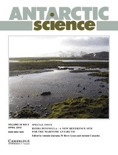
ANTARCTIC SCIENCE
Connecting Researchers in the Heart of Polar ScienceANTARCTIC SCIENCE is a premier journal dedicated to the multidisciplinary study of Antarctica, encompassing its ecology, geology, and oceanography. Published by Cambridge University Press, this journal provides a vital platform for researchers, professionals, and students eager to explore the complexities of polar science. With an impressive Scopus ranking placing it in the 70th percentile for geology and 65th for ecology, ANTARCTIC SCIENCE stands out as a Q2 journal in both Ecology, Evolution, Behavior and Systematics and Oceanography categories, reflecting its significant impact in the field. The journal invites submissions that contribute to the understanding of Antarctic environments, wildlife, and climatic changes since its inception in 1986. While not openly accessible, it presents rich accessibility options for institutions and researchers, making cutting-edge research available to its audience. Join the global conversation in advancing polar research and understanding at ANTARCTIC SCIENCE.
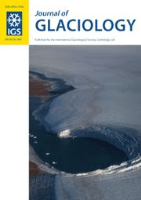
JOURNAL OF GLACIOLOGY
Exploring the intricate relationships of glaciers and Earth's systems.JOURNAL OF GLACIOLOGY, published by Cambridge University Press, is a leading open-access journal dedicated to advancing the scientific study of glaciers and ice sheets, with a particular focus on their interactions within Earth’s systems. With an ISSN of 0022-1430 and E-ISSN of 1727-5652, this journal has established itself as an influential platform since its inception, currently ranked in the Q1 category of Earth-Surface Processes in 2023. The journal is based in the United Kingdom and has witnessed a convergence of pivotal research from various periods spanning from 1977 through to 2024. It enjoys a commendable Scopus rank of #29 out of 179 in Earth and Planetary Sciences, affirming its impact with an impressive 84th percentile. The open-access model adopted since 2016 enhances its accessibility, enabling a wider audience of researchers, students, and professionals to engage with high-quality research on glaciology, climate change, and environmental systems. By fostering interdisciplinary dialogue and disseminating innovative findings, the JOURNAL OF GLACIOLOGY plays a crucial role in enhancing our understanding of glacial dynamics and their significance in our rapidly changing world.
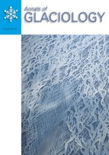
ANNALS OF GLACIOLOGY
Illuminating the Dynamics of Ice and ClimateANNALS OF GLACIOLOGY, published by Cambridge University Press, is a premier open-access journal tailored for the field of glaciology and cryospheric sciences. Established in 1980, the journal has become a vital resource for researchers and professionals analyzing the multifaceted interactions between glaciers, ice sheets, and the Earth's climate system. With a commendable Q1 status in Earth-Surface Processes for 2023 and a commitment to open access since 2016, ANNALS OF GLACIOLOGY provides unparalleled visibility and accessibility for cutting-edge research, fostering global dialogue and innovation among scientists. The journal features a broad scope, encompassing both fundamental studies and applied research on glacial characteristics, behavior, and their environmental impacts. Located in Cambridge, England, this journal is particularly essential for those engaged in the ongoing exploration of our planet's cryospheric changes, their implications, and their relevance to climate science.
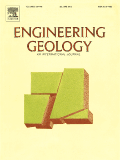
ENGINEERING GEOLOGY
Fostering Knowledge in Earth Sciences and EngineeringENGINEERING GEOLOGY, published by Elsevier, is a leading journal in the fields of Geology and Geotechnical Engineering, recognized by its prestigious Q1 ranking in both categories for 2023. With a deep focus on the application of geological principles to engineering practices, this journal plays a vital role in advancing knowledge and methodologies that enhance infrastructure development and environmental sustainability. Operating since 1965, the journal disseminates high-quality research, offering insights that foster innovation in geotechnical assessments and geological hazard evaluation. Researchers and professionals benefit from its rigorous peer-review process and impactful studies, bolstered by a strong Scopus ranking - #4 in Geology and #3 in Geotechnical Engineering, both placing it in the top 2% of its field. Although there is no Open Access option available, the journal facilitates significant academic discourse, making it an essential resource for anyone involved in the intersection of geology and engineering.
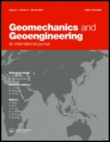
Geomechanics and Geoengineering-An International Journal
Transforming Ideas into Groundbreaking Geotechnical SolutionsGeomechanics and Geoengineering-An International Journal, published by Taylor & Francis Ltd, serves as a prominent platform for the dissemination of innovative research and advancements in the fields of Geotechnical Engineering and Engineering Geology. With an ISSN of 1748-6025 and E-ISSN of 1748-6033, this journal has established itself as a critical resource within its category, ranking in the Q2 quartile according to the 2023 metrics and positioning itself in the top 38% of the Scopus rankings for Earth and Planetary Sciences. Geomechanics and Geoengineering encompasses a diverse range of topics, including but not limited to soil mechanics, foundation engineering, rock mechanics, and environmental geotechnics, ultimately aiming to advance both theoretical and practical knowledge in these vital areas. This journal not only highlights pioneering research but also facilitates a platform for academia and industry practitioners to collaborate and exchange ideas. While it does not offer open access, it remains a valuable resource for institutions and individuals committed to enhancing their expertise in the geotechnical domain. With convergence years spanning from 2006 to 2024, this journal is equipped to significantly contribute to the evolving landscape of geomechanical research.
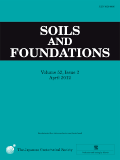
Soils and Foundations
Advancing knowledge in soil mechanics and foundation engineering.Soils and Foundations, an esteemed journal published by the Japanese Geotechnical Society, has established itself as a pivotal platform for innovative research in Civil and Structural Engineering and Geotechnical Engineering. With an impressive impact factor reflected in its Q1 quartile ratings for both disciplines, the journal provides critical insights that foster advancements in the understanding of soil behavior and foundation design. Since its transition to Open Access in 2020, Soils and Foundations has broadened its reach, ensuring accessible dissemination of knowledge to researchers, students, and professionals globally. With a rich history dating back to its inception in 1960, the journal continues to uphold a high standard of scholarly excellence, ranking within the top percentile in Scopus across geotechnical engineering fields. This commitment to quality and accessibility makes it an essential resource for anyone engaged in the vital areas of soil mechanics and foundation engineering.
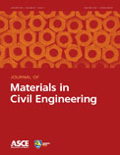
JOURNAL OF MATERIALS IN CIVIL ENGINEERING
Exploring the Future of Building MaterialsJOURNAL OF MATERIALS IN CIVIL ENGINEERING is a highly regarded publication within the field of civil engineering, published by the ASCE-American Society of Civil Engineers. This journal, which has been actively contributing to the discourse in building and construction materials since 1989, has established itself as a vital resource for researchers and practitioners alike, evidenced by its impressive Q1 rankings across multiple categories, including Building and Construction, Civil and Structural Engineering, Materials Science, and Mechanics of Materials as of 2023. With a strong focus on innovation and application in materials technology, it provides insights that are paramount for advancing practices in civil engineering. The journal's commitment to disseminating high-quality research is reflected in its exceptional standing within Scopus, where it ranks in the top quartile of its respective fields. Although not an open-access journal, it remains an essential platform for disseminating impactful research findings and fostering professional development in the materials science community. For more information or to explore the latest publications, researchers can access the journal through the ASCE library.

Research in Cold and Arid Regions
Connecting scholars to the pulse of Earth's harshest climates.Research in Cold and Arid Regions, published by KEAI PUBLISHING LTD, is a premier journal dedicated to advancing knowledge in the fields of Earth-Surface Processes, Environmental Engineering, and Geosciences. With an ISSN of 2097-1583 and an E-ISSN of 2949-7302, this journal aims to provide a platform for researchers, professionals, and students to share their findings on the complexities of cold and arid environments, which have increasing significance in the context of climate change. The journal holds a Q3 ranking in multiple categories for 2023, reflecting its commitment to quality scholarship, though it also sits at the cusp of enhancing its potential impact in Geotechnical Engineering and Engineering Geology. Open Access options allow for wider dissemination of research findings, ensuring that valuable insights are accessible to a global audience. Based in Beijing, China, the journal is strategically positioned to address the unique challenges faced by arid and cold regions worldwide, making it an essential resource for scholars and practitioners focused on sustainable solutions for environmental issues.
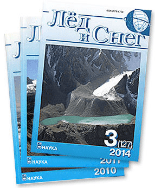
Led i Sneg-Ice and Snow
Pioneering research for a sustainable Earth.Led i Sneg-Ice and Snow is a distinguished academic journal dedicated to advancing research in the fields of Earth-surface processes, geochemistry, petrology, and water science. Published by the Institute of Geography, Russian Academy of Sciences, this journal has embraced Open Access since 2015, ensuring that valuable scientific findings are accessible to researchers and professionals globally. With an ISSN of 2076-6734 and an E-ISSN of 2412-3765, the journal has made significant contributions within its converged years, spanning from 2017 to 2024. Notably, it holds a respectable position in various Scopus ranks, showcasing its impact, including a Q2 category in Earth-Surface Processes for 2023, indicating its relevance and importance in the scientific community. As a key resource for those studying Earth's climatic changes and environmental challenges, Led i Sneg-Ice and Snow serves as a vital platform for disseminating innovative research and fostering collaboration among academics, professionals, and students in the environmental sciences.